Virginia is known for its rich culinary history and diverse food scene, offering a delightful array of flavors that reflect its heritage and geography. At larosafoods.com, we invite you to explore the iconic dishes and ingredients that define Virginia’s food culture, from succulent oysters to savory barbecue, promising a flavorful adventure for every palate. Dive in to discover the best food Virginia has to offer, including local produce, traditional recipes, and unique culinary experiences.
1. What Makes Virginia’s Oysters So Special?
Virginia’s oysters are renowned for their exceptional quality and diverse flavors, shaped by the unique environments of eight distinct regions along the coast. These regions, including the Chesapeake Bay and the Eastern Shore, each impart a unique taste profile to the oysters, varying in salinity, creaminess, and sweetness. According to the Virginia Marine Resources Commission, the state’s oyster industry has a rich history dating back to the early 17th century, with a resurgence in recent years due to sustainable farming practices. These practices not only ensure the health of the oyster populations but also contribute to the overall health of the Chesapeake Bay ecosystem. The distinct flavors of Virginia oysters make them a sought-after delicacy, celebrated as the Oyster Capital of the East Coast.
Oysters are a versatile ingredient, and Virginia chefs showcase them in numerous ways. You can enjoy them raw, grilled, fried, or baked. A classic preparation involves serving them on the half shell with a squeeze of lemon or a mignonette sauce. Another popular dish is oyster stew, a creamy and comforting soup perfect for cooler months. Fried oysters are often served in sandwiches or as part of a seafood platter. Whether you prefer them simple or elaborate, Virginia oysters offer a taste of the state’s coastal heritage.
2. How Did BBQ and Country Ham Become Virginia Staples?
BBQ and country ham are deeply ingrained in Virginia’s culinary identity, with traditions dating back centuries. Virginia country hams, particularly those from Smithfield, have gained international recognition for their distinctive curing process, which, by law, must occur within the town limits of Smithfield. According to “Virginia Barbecue: A History” by Joe Hayes, Southern barbecue has its roots in Virginia, evolving from the Powhatan technique of slow-cooking meats over smoldering coals. This method, combined with seasonings from European settlers and complex flavorings introduced by African slaves, shaped the unique BBQ styles found across the state.
Virginia’s BBQ is diverse, with each region offering its own distinct flavors and sauces. In the Tidewater area, you’ll find tangy vinegar and tomato-mustard blends, while Central Virginia favors Worcestershire-style sauces. The Shenandoah Valley leans towards vinegar and herb-based sauces, and Northern Virginia prefers sweet tomato-based sauces. Country ham is often served in ham biscuits, a staple at Virginia gatherings, showcasing the savory and salty flavors of the cured meat. Whether you prefer the smoky taste of BBQ or the salty bite of country ham, these foods represent the heart of Virginia’s culinary heritage.
3. Why Are Virginia Peanuts So Highly Regarded?
Virginia peanuts are highly regarded for their large size, distinctive flavor, and superior quality, making them a beloved snack and ingredient in various culinary creations. The Virginia Diner in Wakefield is renowned for packaging and distributing these peanuts worldwide, contributing to their global popularity. According to the Virginia Peanut Growers Association, the first commercial peanut crop in Virginia originated near Waverly in 1842, and by 1902, the state had become the largest peanut producer in the United States. The coastal and southern regions of Virginia, known as Peanut Country, offer a unique terroir that contributes to the peanuts’ exceptional taste and texture.
Virginia peanuts are versatile and can be enjoyed in numerous ways. They are often roasted and salted for a simple yet satisfying snack, or used in candies, cookies, and other desserts. Peanut butter, made from Virginia peanuts, is a pantry staple, and peanut oil is a popular choice for cooking due to its high smoke point and nutty flavor. Exploring The Salty Southern Route provides an opportunity to discover the rich history and culinary applications of Virginia peanuts, celebrating this iconic crop.
4. What Makes Blue Crabs a Must-Try in Virginia?
Blue crabs are a must-try delicacy in Virginia, particularly in the coastal towns along the Chesapeake Bay and Eastern Shore, where they are harvested fresh and prepared in a variety of delicious ways. The Chesapeake Bay is known for its abundant blue crab population, making it a prime location for crabbing and enjoying this iconic seafood. According to the Chesapeake Bay Foundation, blue crabs are not only a culinary delight but also an important part of the Bay’s ecosystem.
Steamed crabs are a classic preparation, often enjoyed at waterfront eateries where diners can get their hands dirty picking the sweet meat. Crab cakes are another popular dish, featuring lumps of blue crab meat seasoned and pan-fried or baked. Soft shell crabs, lightly battered and fried, are a seasonal delicacy, offering a unique and satisfying culinary experience. Whether you’re picking steamed crabs or savoring crab cakes, blue crabs provide a taste of Virginia’s coastal bounty.
5. Where Can You Find the Best Mountain Trout in Virginia?
The best mountain trout in Virginia can be found in the cooler streams of the state’s mountainous regions, where the brook trout, Virginia’s official fish, thrives. These areas, including the Blue Ridge Highlands, offer scenic beauty and pristine waters ideal for trout fishing. According to the Virginia Department of Wildlife Resources, the state’s trout streams are carefully managed to ensure healthy populations and provide excellent angling opportunities.
Trout is prepared in various traditional cooking techniques, showcasing its delicate flavor and versatility. Applewood smoking imparts a smoky richness, while cornmeal crusting adds a crispy texture. Almondine, a classic preparation with almonds and butter, enhances the trout’s natural flavors. Many restaurants in the western part of the state feature trout on their menus, offering a taste of Virginia’s mountain cuisine. Whether you’re an angler or a food enthusiast, exploring Virginia’s mountain trout is a rewarding experience.
6. When Is the Best Time to Enjoy Virginia Apples?
The best time to enjoy Virginia apples is during the fall harvest season, when orchards across the state offer pick-your-own experiences and showcase a variety of delicious apple products. Virginia is the sixth-largest apple-producing state in the country, with orchards concentrated in the Shenandoah Valley, Southwest, and Central Virginia. According to the Virginia Apple Growers Association, the state’s apple industry has a long and rich history, dating back to the early colonial period.
Apple harvest festivals are popular events, celebrating the season with apple cider, apple sauce, apple butter, and other treats. Virginia is also home to a growing hard cider industry, with more than 20 cideries across the state, offering a range of crisp and refreshing beverages. Whether you’re picking apples fresh off the trees or enjoying apple-inspired creations, fall is the perfect time to savor Virginia’s apple bounty.
7. What Are the Origins of Brunswick Stew?
Brunswick Stew originated in Brunswick County, located in Southern Virginia, making it a quintessential comfort food with a rich history. This hearty meat and vegetable-based stew has long been a staple during brisk autumn and winter days, warming hearts and filling bellies. According to the Brunswick County Historical Society, the original recipes were made with wild game such as rabbits and squirrels, reflecting the region’s hunting traditions.
Today’s variations typically include chicken or pork, smoked for many hours before being added to the pot, along with vegetables such as corn, beans, and tomatoes. The famous stew is often made in a huge cast iron cauldron and stirred with a boat oar at community events in the southern region. Whether you’re enjoying a traditional recipe or a modern twist, Brunswick Stew offers a taste of Virginia’s culinary heritage and Southern hospitality.
8. What is Appalachian Food and Where Can You Find It in Virginia?
Appalachian food in Virginia represents the culinary traditions of settlers who arrived in the mountain regions, including the Blue Ridge Highlands and Heart of Appalachia, and adapted their recipes using local crops and ingredients. These settlers, from England, Scotland, Germany, Hungary, and Italy, created a unique regional cuisine that reflects their resourcefulness and connection to the land. According to the Appalachian Regional Commission, this cuisine is characterized by its hearty, rustic flavors and emphasis on preserving and utilizing seasonal ingredients.
Hearty mountain fare includes cornbread and beans, venison, wild turkey, and pumpkins, while pickling and canning vegetables were essential for sustenance during the winters. Today, chefs in the western part of the state pay homage to these settlers by serving Appalachian food and using the same centuries-old techniques. You can find Appalachian cuisine in restaurants and markets throughout the mountain regions, offering a taste of Virginia’s rich cultural heritage.
9. Where Can You Find Authentic Virginia Recipes?
To find authentic Virginia recipes, larosafoods.com offers a diverse collection of dishes that celebrate the state’s culinary traditions. Our website features recipes for iconic Virginia foods like oysters, BBQ, country ham, blue crabs, and Brunswick Stew, along with detailed instructions and helpful tips to ensure your culinary creations are a success.
We collaborate with local chefs and food historians to curate recipes that accurately reflect Virginia’s regional flavors and cultural heritage. Whether you’re looking for a classic dish or a modern interpretation, you’ll find inspiration and guidance on larosafoods.com. We also provide information on the origins and history of these dishes, allowing you to connect with Virginia’s rich culinary past.
10. What Are Some Modern Twists on Virginia’s Traditional Foods?
Modern chefs in Virginia are putting innovative spins on traditional foods, creating exciting new culinary experiences while honoring the state’s rich heritage. They are using local ingredients and contemporary techniques to elevate classic dishes and introduce new flavors.
For example, you might find oyster tacos with a spicy slaw, BBQ-glazed pork belly with pickled vegetables, or a deconstructed Brunswick Stew with smoked chicken and crispy cornbread croutons. These modern twists showcase the versatility of Virginia’s traditional foods and the creativity of its culinary community. By exploring these innovative dishes, you can discover new dimensions of Virginia’s food culture.
11. How Does Virginia’s Geography Influence Its Food?
Virginia’s diverse geography, ranging from the coastal plains to the Appalachian Mountains, significantly influences its food, creating a rich tapestry of regional cuisines and ingredients. The coastal regions, including the Chesapeake Bay and Eastern Shore, are known for their abundant seafood, including oysters, blue crabs, and various fish species. The fertile farmlands of the Shenandoah Valley and Central Virginia produce a wide variety of fruits, vegetables, and livestock. The mountainous regions offer wild game, trout, and Appalachian specialties.
This geographical diversity allows for a wide range of culinary experiences, from fresh seafood feasts on the coast to hearty mountain fare in the west. The unique terroir of each region contributes to the distinctive flavors and ingredients that define Virginia’s food culture.
12. What Role Does Sustainable Farming Play in Virginia’s Food Scene?
Sustainable farming plays a crucial role in Virginia’s food scene, promoting environmental stewardship, supporting local economies, and ensuring the availability of high-quality ingredients. Many Virginia farmers are committed to sustainable practices such as crop rotation, cover cropping, and integrated pest management, which help to conserve soil, water, and biodiversity. According to the Virginia Department of Agriculture and Consumer Services, the state has seen a growing interest in sustainable farming practices, with more farmers adopting these methods to enhance their operations and meet consumer demand for sustainably produced food.
Sustainable farming not only benefits the environment but also enhances the flavor and nutritional value of the food. By supporting local farmers who prioritize sustainability, you can contribute to a healthier and more resilient food system in Virginia.
13. What Are the Health Benefits of Eating Local Virginia Foods?
Eating local Virginia foods offers numerous health benefits, from increased access to fresh, seasonal produce to reduced environmental impact. Local foods are often harvested at their peak ripeness, resulting in higher levels of vitamins, minerals, and antioxidants. They also travel shorter distances, reducing the carbon footprint associated with transportation and preserving their nutritional value.
By choosing local Virginia foods, you can support local farmers, boost the local economy, and enjoy a more nutritious and sustainable diet. Additionally, eating seasonally allows you to experience the diverse flavors and ingredients that Virginia has to offer throughout the year.
14. What Are Some Popular Food Festivals in Virginia?
Virginia hosts a variety of popular food festivals throughout the year, celebrating the state’s diverse culinary offerings and providing opportunities to sample local foods, meet chefs and farmers, and enjoy live entertainment. These festivals showcase everything from oysters and seafood to BBQ and craft beverages, drawing visitors from across the state and beyond.
Some of the most popular food festivals in Virginia include the Chincoteague Seafood Festival, the Urbanna Oyster Festival, the Smithfield Ham and Gourmet Food Festival, and the Virginia Wine Festival. These events offer a fun and engaging way to experience Virginia’s food culture and support local businesses.
15. How Can I Plan a Culinary Road Trip Through Virginia?
Planning a culinary road trip through Virginia is a delicious way to explore the state’s diverse food scene and discover hidden culinary gems. Start by identifying the regions and foods you want to experience, such as the seafood of the Chesapeake Bay, the BBQ of Central Virginia, or the Appalachian cuisine of the mountains.
Create an itinerary that includes visits to local farms, farmers’ markets, restaurants, and food festivals. Consider incorporating historical sites and scenic attractions to enhance your travel experience. Utilize online resources like larosafoods.com to find recommendations and plan your route.
Here’s a sample itinerary:
| Day | Region | Activities |
|---|---|---|
| 1 | Chesapeake Bay | Visit a local oyster farm, enjoy a seafood dinner on the waterfront. |
| 2 | Eastern Shore | Explore a farmers’ market, sample blue crab dishes, visit a winery. |
| 3 | Central Virginia | Tour a BBQ joint, visit a historical site, sample local craft beers. |
| 4 | Shenandoah Valley | Pick apples at an orchard, enjoy a farm-to-table dinner, visit a cidery. |
| 5 | Blue Ridge Highlands | Hike in the mountains, sample Appalachian cuisine, visit a local brewery. |
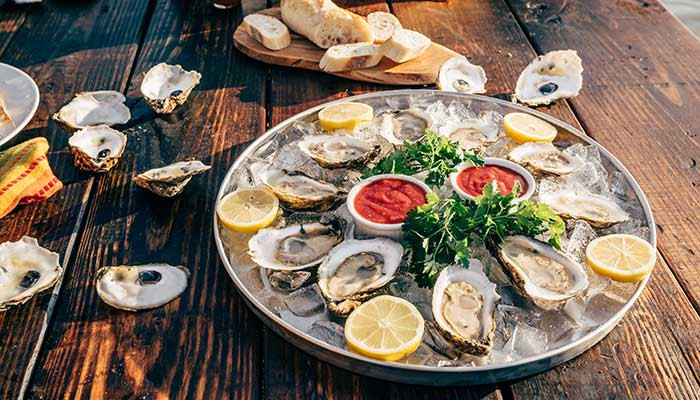
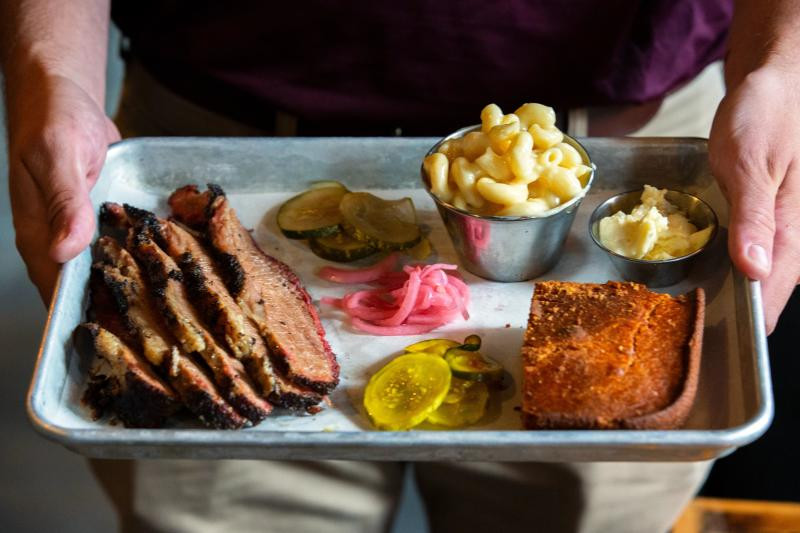
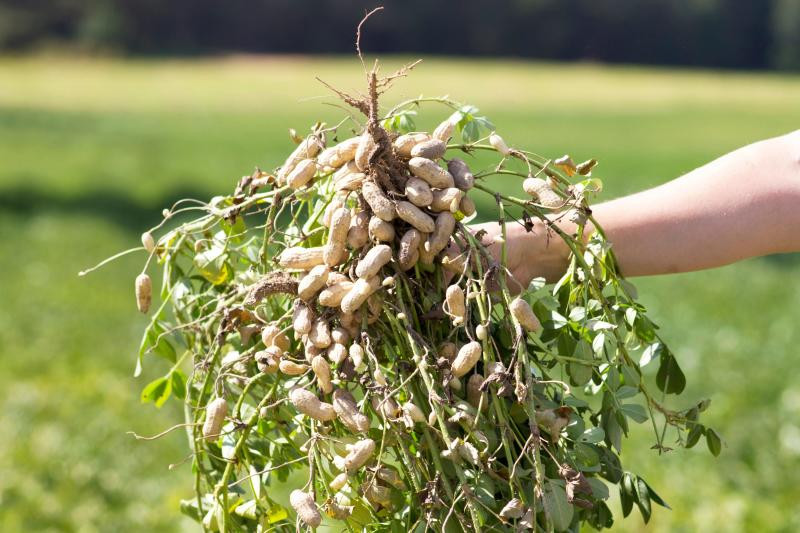

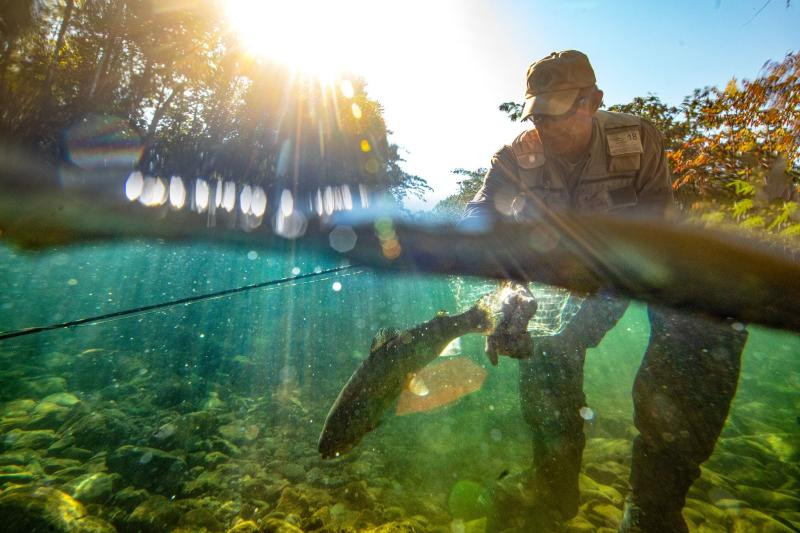

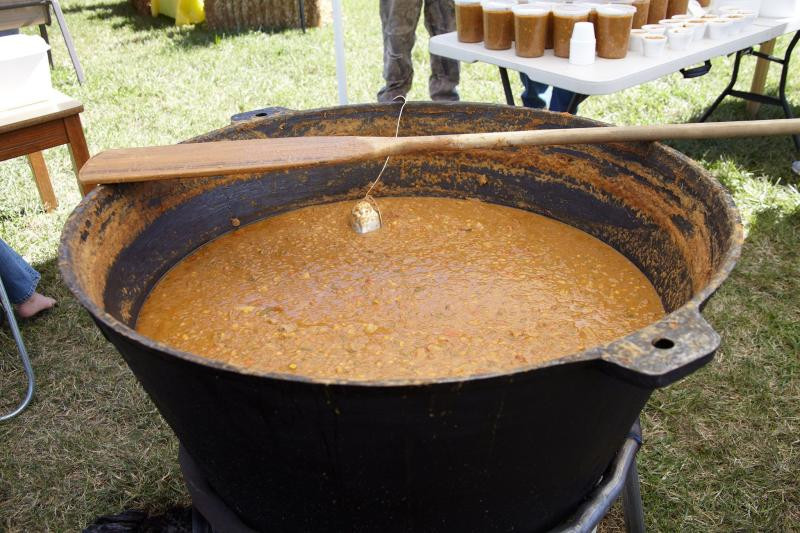
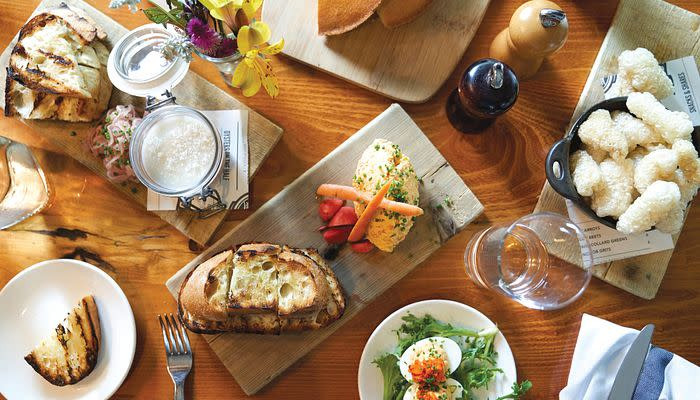
16. What Are Some Great Virginia Food and Drink Pairings?
Virginia’s diverse food scene offers numerous opportunities for exciting and delicious pairings with local wines, beers, and ciders. The state’s winemaking industry has grown significantly in recent years, producing award-winning wines that complement a wide range of dishes.
Here are some popular Virginia food and drink pairings:
| Food | Drink | Why it Works |
|---|---|---|
| Oysters | Virginia White Wine | The crisp acidity and mineral notes of Virginia white wines, such as Viognier and Petit Manseng, complement the briny flavor of oysters. |
| BBQ | Virginia Red Wine | The bold flavors of Virginia red wines, such as Cabernet Franc and Merlot, pair well with the smoky and savory taste of BBQ. |
| Country Ham | Virginia Cider | The sweetness and acidity of Virginia cider cut through the saltiness of country ham, creating a balanced and flavorful pairing. |
| Blue Crabs | Virginia Pale Ale | The hoppy bitterness and citrus notes of Virginia pale ale complement the sweet and delicate flavor of blue crabs. |
| Brunswick Stew | Virginia Stout | The rich and malty flavors of Virginia stout pair well with the hearty and comforting taste of Brunswick Stew. |
| Virginia Peanuts | Virginia Port | The nutty and sweet taste of Virginia Peanuts is a perfect match with the rich, sweet flavours of a Virginia Port. |
17. How Has Virginia’s Food Scene Changed Over Time?
Virginia’s food scene has evolved significantly over time, reflecting the state’s changing demographics, cultural influences, and economic development. From its early colonial roots to its current status as a culinary destination, Virginia has embraced new flavors and techniques while preserving its traditional dishes.
In recent years, there has been a growing emphasis on local and sustainable food, with more restaurants and chefs sourcing ingredients from Virginia farms and producers. This trend has led to a greater appreciation for the state’s agricultural heritage and a renewed focus on seasonal cuisine. Additionally, the rise of food tourism has helped to promote Virginia’s culinary attractions and draw visitors from around the world.
18. What Unique Culinary Experiences Can You Find in Virginia?
Virginia offers a wealth of unique culinary experiences that cater to a variety of interests and tastes. From oyster farm tours to wine tastings to cooking classes, there’s something for everyone to enjoy.
Here are some examples of unique culinary experiences in Virginia:
- Oyster Farm Tours: Learn about oyster farming and sample fresh oysters straight from the source.
- Wine Tastings: Explore Virginia’s award-winning wineries and sample a variety of wines.
- Cooking Classes: Learn how to prepare traditional Virginia dishes with local chefs.
- Farm-to-Table Dinners: Enjoy a multi-course meal featuring ingredients sourced directly from local farms.
- Craft Brewery Tours: Discover Virginia’s thriving craft beer scene and sample a variety of beers.
19. How Can I Support Local Virginia Food Businesses?
Supporting local Virginia food businesses is a great way to boost the local economy, promote sustainable farming, and enjoy high-quality, delicious food. There are many ways to support local food businesses, from shopping at farmers’ markets to dining at local restaurants to buying directly from Virginia producers.
Here are some tips for supporting local Virginia food businesses:
- Shop at farmers’ markets and local grocery stores.
- Dine at restaurants that source ingredients from local farms.
- Buy directly from Virginia producers, such as wineries, breweries, and farms.
- Attend local food festivals and events.
- Spread the word about your favorite local food businesses.
20. What Resources Are Available for Virginia Food Lovers?
For Virginia food lovers, there are many resources available to help you explore the state’s culinary scene and discover new flavors and experiences. Websites like larosafoods.com offer a wealth of information on Virginia foods, recipes, restaurants, and events.
In addition to online resources, there are also many print publications and organizations that focus on Virginia food. These resources can provide valuable insights into the state’s culinary culture and help you connect with other food enthusiasts.
Address: 1 S Park St, San Francisco, CA 94107, United States.
Phone: +1 (415) 987-0123.
Website: larosafoods.com.
Ready to embark on a culinary adventure? Visit larosafoods.com today to discover a treasure trove of Virginia recipes, cooking tips, and nutritional information. Explore our diverse collection of dishes, learn new techniques, and connect with a community of food lovers. Whether you’re a seasoned chef or a home cook, larosafoods.com is your go-to resource for all things Virginia food. Start exploring now and unlock a world of flavor.
FAQ About Virginia’s Food Scene
1. What is the most iconic food from Virginia?
Virginia is most famously known for its oysters, celebrated as the Oyster Capital of the East Coast, with eight distinct regions offering unique flavors. These range from salty to creamy, making them a versatile and iconic dish in Virginia’s culinary landscape.
2. What kind of BBQ is Virginia known for?
Virginia BBQ varies by region; the Tidewater area features tangy vinegar and tomato-mustard blends, Central Virginia uses Worcestershire-style sauce, the Shenandoah Valley prefers vinegar and herb-based sauce, and Northern Virginia favors sweet tomato-based sauce. This regional diversity makes Virginia BBQ unique and reflective of its local flavors.
3. Are peanuts a big crop in Virginia?
Yes, peanuts are a significant crop in Virginia, with the state being a major producer of Virginia peanuts, known for their large size and distinctive flavor. The Virginia Diner in Wakefield is particularly famous for packaging and distributing these peanuts worldwide, highlighting their importance to the state’s agriculture.
4. What seafood is Virginia known for?
Virginia is particularly renowned for its blue crabs, especially those harvested from the Chesapeake Bay and Eastern Shore. These crabs are enjoyed steamed, in crab cakes, or as soft-shell crabs, making them a must-try seafood delicacy in Virginia.
5. What is Brunswick Stew, and why is it famous in Virginia?
Brunswick Stew is a hearty meat and vegetable-based stew that originated in Brunswick County, Virginia, and is famous for its comforting flavors and historical roots. Traditionally made with wild game, today it typically includes chicken or pork, making it a staple at many Southern events.
6. Where can I find the best apples in Virginia?
The best apples in Virginia can be found in the Shenandoah Valley, Southwest, and Central Virginia, where many orchards offer pick-your-own experiences during the fall harvest season. These regions are known for their apple harvest festivals, showcasing delicious apple products like cider and sauce.
7. What is Appalachian food in Virginia?
Appalachian food in Virginia represents the culinary traditions of settlers in the Blue Ridge Highlands and Heart of Appalachia, featuring hearty dishes like cornbread, beans, venison, and pickled vegetables. This cuisine reflects the resourcefulness and connection to the land of the early settlers.
8. What are some must-try restaurants for Virginia cuisine?
To experience authentic Virginia cuisine, visit waterfront eateries in the Chesapeake Bay for blue crabs, BBQ joints in Central Virginia for regional BBQ, and restaurants in the western part of the state for Appalachian food. Also, check out Virginia wineries that pair food with local wines.
9. How does Virginia’s geography affect its food scene?
Virginia’s diverse geography, from coastal plains to mountains, influences its food by providing a variety of ingredients, including seafood, fruits, vegetables, and game. Each region’s unique terroir contributes to the distinctive flavors that define Virginia’s culinary culture.
10. What are some popular food festivals in Virginia?
Popular food festivals in Virginia include the Chincoteague Seafood Festival, the Urbanna Oyster Festival, and the Smithfield Ham and Gourmet Food Festival, which celebrate the state’s diverse culinary offerings and provide opportunities to sample local foods.

